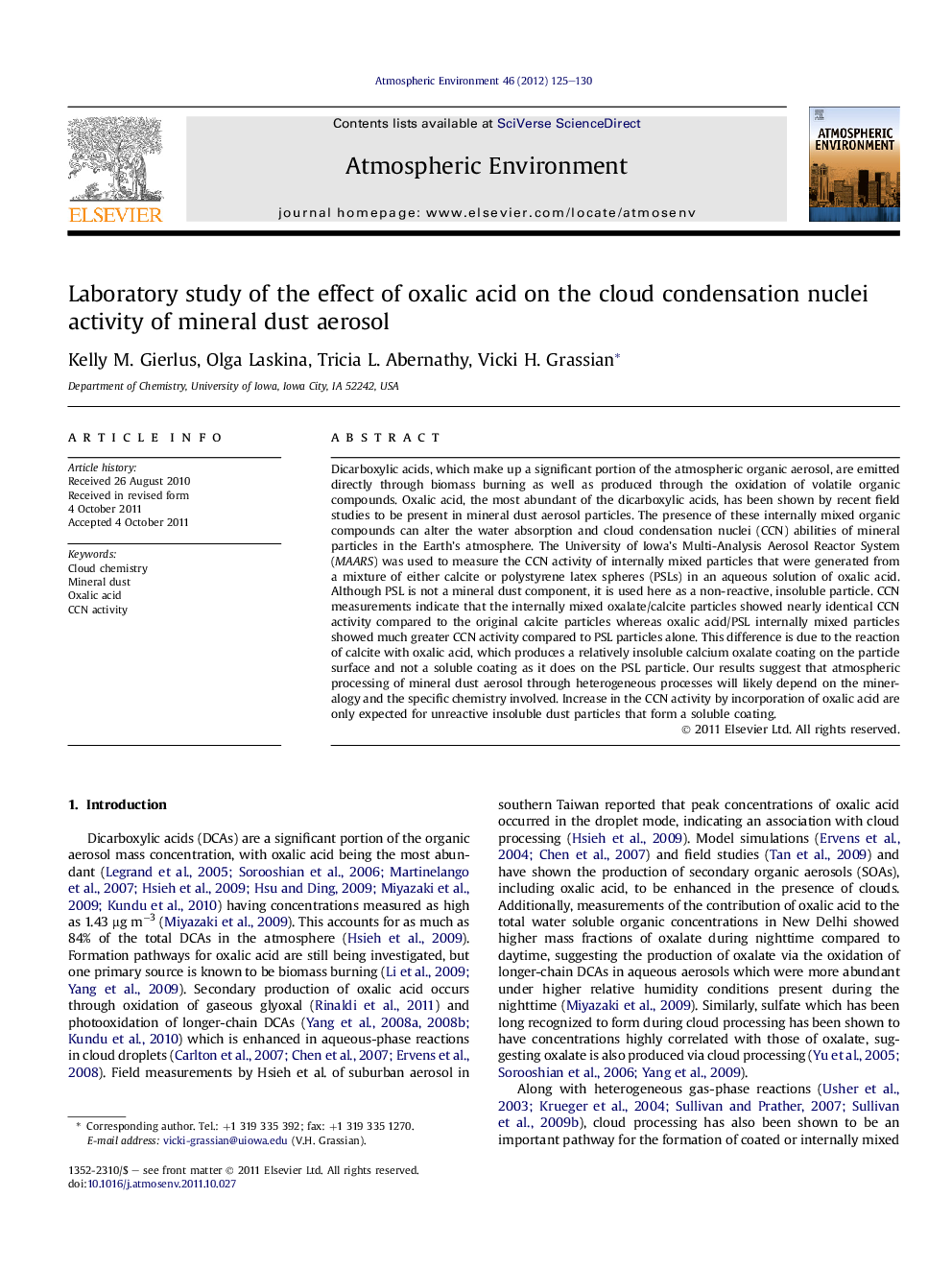| Article ID | Journal | Published Year | Pages | File Type |
|---|---|---|---|---|
| 4439245 | Atmospheric Environment | 2012 | 6 Pages |
Dicarboxylic acids, which make up a significant portion of the atmospheric organic aerosol, are emitted directly through biomass burning as well as produced through the oxidation of volatile organic compounds. Oxalic acid, the most abundant of the dicarboxylic acids, has been shown by recent field studies to be present in mineral dust aerosol particles. The presence of these internally mixed organic compounds can alter the water absorption and cloud condensation nuclei (CCN) abilities of mineral particles in the Earth’s atmosphere. The University of Iowa’s Multi-Analysis Aerosol Reactor System (MAARS) was used to measure the CCN activity of internally mixed particles that were generated from a mixture of either calcite or polystyrene latex spheres (PSLs) in an aqueous solution of oxalic acid. Although PSL is not a mineral dust component, it is used here as a non-reactive, insoluble particle. CCN measurements indicate that the internally mixed oxalate/calcite particles showed nearly identical CCN activity compared to the original calcite particles whereas oxalic acid/PSL internally mixed particles showed much greater CCN activity compared to PSL particles alone. This difference is due to the reaction of calcite with oxalic acid, which produces a relatively insoluble calcium oxalate coating on the particle surface and not a soluble coating as it does on the PSL particle. Our results suggest that atmospheric processing of mineral dust aerosol through heterogeneous processes will likely depend on the mineralogy and the specific chemistry involved. Increase in the CCN activity by incorporation of oxalic acid are only expected for unreactive insoluble dust particles that form a soluble coating.
► Oxalic acid, the most abundant of the dicarboxylic acids, can be present in dust aerosol and impact the properties of dust. ► Heterogeneous processes of mineral dust with oxalic acid will depend on mineralogy. ► Impact of oxalic acid on dust properties depends on mineralogy. ► CCN activity of oxalate/calcite particles were similar to the unreacted calcite particles. ► CCN activity increases when the particle is unreactive and insoluble.
